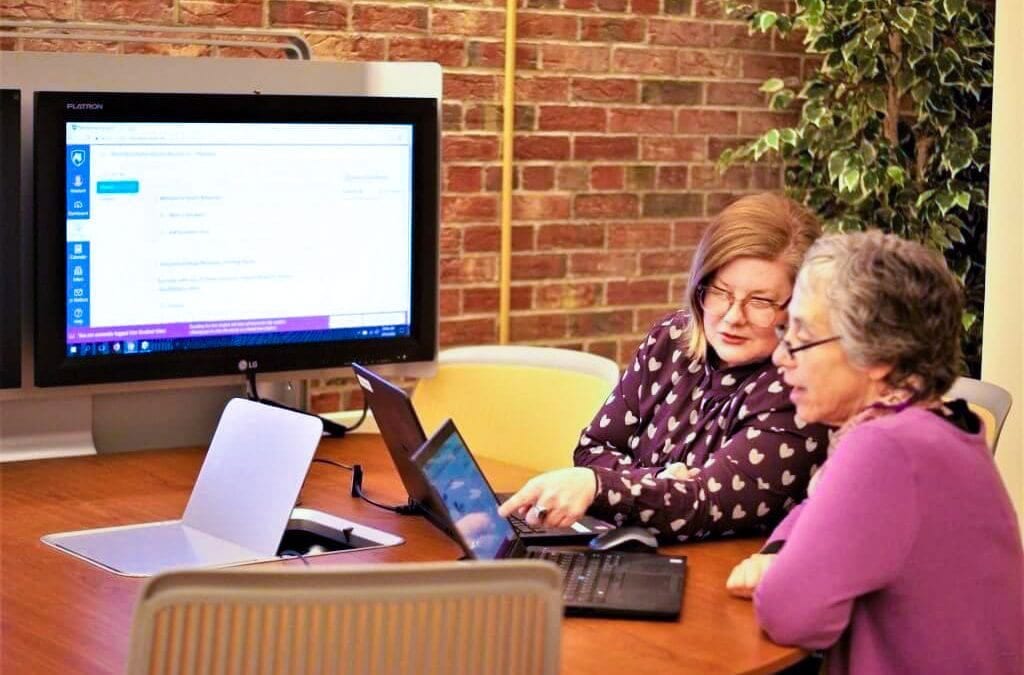Canvas as an information source and event organizing tool
Note: This is part of an ongoing series that will take a look at some of the interesting ways Penn State faculty are using Canvas to teach.
While many may think of using Canvas for courses only, a faculty member and a librarian from Penn State New Kensington have pushed the boundaries of what Canvas can be in two innovative ways that are non-course related.
Deborah Sillman, assistant teaching professor of biology, and Amy Rustic, reference librarian, created within Canvas the Faculty Resources Group and a de facto event website for the Penn State New Kensington Research and Creative Exposition.
The Faculty Resources Group began as a solution to a problem Sillman and Rustic faced before the 2017 fall semester.
“We had a bunch of faculty starting at the same time, and we wanted to make sure they had access to the information and resources they would need,” Rustic said. “We had a lot of good information for them but it was in lots of different locations.”
So Rustic and Sillman decided to create a Canvas group that was a one-stop shop for faculty resources and information. The Faculty Resources Group offers two categories of information: library support services and instructional design resources.
“By putting it in Canvas, where faculty already are, it’s easy for them to find,” Sillman said. “Instead of having to remember a lot of website addresses, it’s a huge advantage for faculty to have it all right there.”
Rustic said that prior to creating the group, they would send an email to faculty with the list of resources. She noted that the Faculty Resources Group is an improvement over an email.
“With having everything in the Canvas group, we can include more detail, which you can’t really with an email because that would make it too long of a read,” she said.
In addition, Sillman said, sometimes faculty may miss an email, so offering them the information through a Canvas group can help ensure they actually see it. The Canvas group serves as a model course in terms of organization. This is especially helpful to new faculty who have not used Canvas before.
The information is specific to the New Kensington campus and its 1,000 enrolled students, Rustic said. She noted it might be difficult to manage an information group for a large campus but did say that it would work well for other small campuses and departments.
So far, Rustic said feedback from faculty has been positive, and they have even had to turn people down who request that their information is added to the group.
“We want the Faculty Resource Group to be focused on resources that support teaching and research,” she said.
“We did encourage them to do their own thing and look at technologies such as Box or Canvas to determine what would work best for them as far as information sharing,” Sillman said.
For the Penn State New Kensington Research and Creative Exposition, Sillman and Rustic created a Canvas group for the event that had several uses.
“It’s both a space to help organize the event but it’s also a space for students to learn everything they need to know about the Expo,” Sillman said.
The Expo is an event where each year 40 to 80 students showcase academic research projects they have worked on for the past semester. This type of project is a great way to collaborate with a faculty member on a topic of interest and to learn how to do scholarly research, collect and analyze data, and bring it all together in a poster format.
Along with finding event information, at the Canvas Expo students can register for the event, turn in their project titles and other project information for the event program, learn how to apply for an information literacy award that is part of the Expo, and review the steps students need to complete to participate in the Expo.
Like the Faculty Resource Group, organizing everything in one spot where faculty and students already are, in Canvas, was the main benefit. Rustic noted that last year, they had students submit via email or Box so it wasn’t quite as centralized, plus there was not a single place to send students for all the information that they needed.
“It really made everything more efficient,” Rustic said. “We have many New Kensington students participating, so it’s a big deal that requires a lot of organizational work.”
Getting students to read the information they need to know is a challenge for the Expo planners, so a possible additional step for next year is adding a Canvas quiz to the event group on what students know they need to do in order to participate in the event.
“Not unlike a course assignment, if you don’t get your stuff in on time, you might not be part of the program,” Sillman said. “We want to make sure they understand what’s required.”
Rustic added that another benefit is having the event to show up in the students’ Canvas To-Do List so it’s always in front of them.
Rustic and Sillman said that the response to both the Faculty Resource Group and the Expo Group has been very positive, and they encourage other Penn State faculty and staff to explore the outside-the-box uses of Canvas.
“We’re tickled that people are interested enough in this that we are being sort of showcased,” Rustic said. “We hope it encourages others to look into what Canvas offers beyond just courses.”
